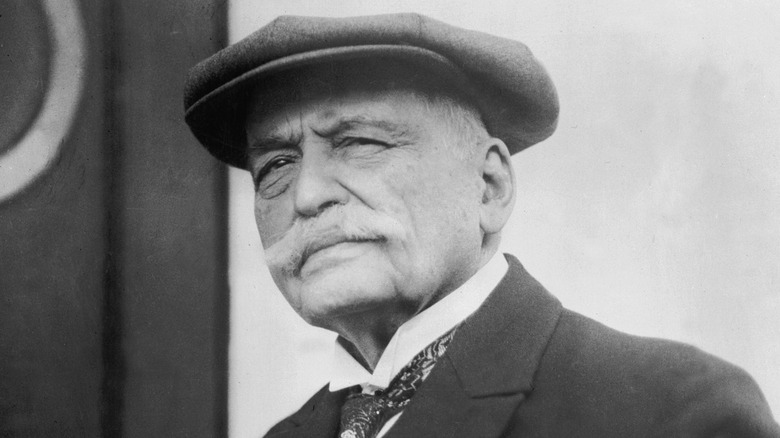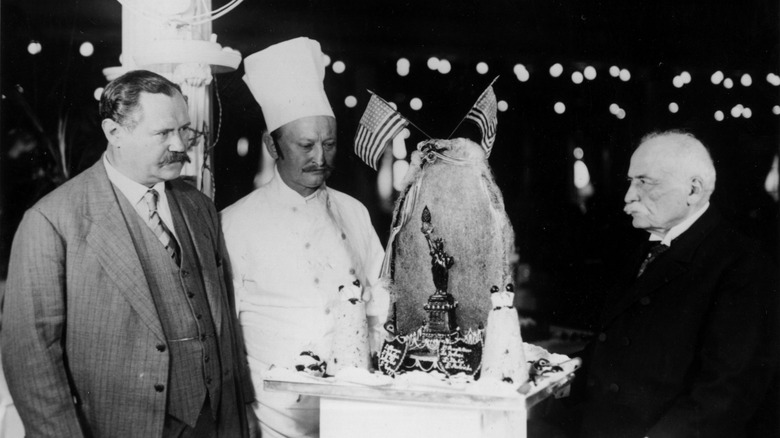How Auguste Escoffier Paved The Way For A La Carte Dining
From changing the ways in which professional chefs cook to reimagining the dining experience, the impact of Auguste Escoffier on the culinary world cannot be understated. Not only did Escoffier take steps to improve efficiency in kitchens, but he also looked for ways to change the meal and service experiences for diners.
While managing hotel restaurants in Paris and London in the 1890s, Escoffier decided to offer meals differently. At the time, dinner guests were used to receiving their food courses at one time and weren't often presented with many choices when it came to menu options. Under the guidance of Escoffier, guests were served meals as requested and could choose exactly which dishes they wanted from a printed menu. "A la carte," French for "by the card," is just that: Food items listed on a menu along with prices for customers to consider.
This new a la carte approach revolutionized how front-of-house team members managed meal service and broadened dining experiences. Instead of all-inclusive spreads and fixed menus, diners could choose exactly what they wanted to sample.
A personalized approach to dining
Since Auguste Escoffier streamlined the work going on inside the kitchen, it seems natural that his efficient approach would impact the serving and dining experience as well. Instead of diners having to pick through set meals and push aside plates that held little interest, preferences for food and ingredients could be considered. Whether leaving aside vegetables or ordering a second entrée, the world of dining opened up under Escoffier's guidance.
With the ability to choose independent dishes and put together meals while keeping budget restrictions in mind, diners were granted more control over their dining experiences and could luxuriate in a more personalized, autonomous approach to service. As patrons were given the freedom to choose which dishes made up their meals, chefs, too, had to consider their recipes with fresh interest.
Set tasting menus still demanded focus from kitchen crews, yet a la carte menus encouraged chefs also to imagine their listed menus as repertoires for independently curated tasting experiences. The approach worked, and we have Escoffier to thank for today's varied menu options.

